
The internet is a vast sea of words—travel blogs, gaming guides, learning portals, you name it. Web writing is anything but mundane, yet so much of it still misses the mark, failing to engage or resonate.
In the early days of the internet, particularly in the late 1990s and early 2000s, web writing was often a simple exercise in transferring text from print to pixels.
Companies were just beginning to understand the potential of a website, and online content was largely about getting information out there. This was a time when even the simplest of homepages felt like an achievement, a digital billboard of sorts.
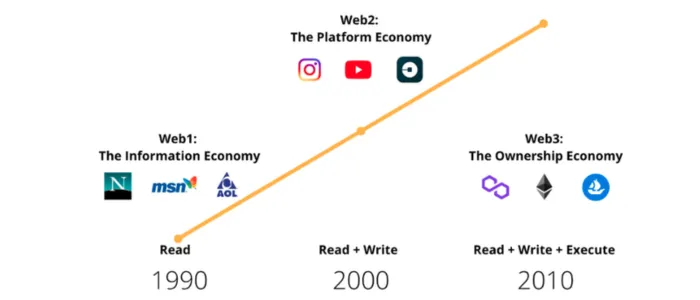
In the late 1990s and early 2000s, the internet was a new frontier. Websites functioned primarily as digital brochures, offering static information with little consideration for user engagement or experience. The content was often text-heavy, and the focus was on quantity over quality. The goal was simply to have an online presence, and metrics like user engagement or conversion rates were rarely tracked or understood.
In 1998, with the introduction of search engines like Google, the internet started evolving into a platform structured around searchable information. This led to the initial rise of Search Engine Optimization (SEO), where the primary tactic was keyword stuffing—cramming as many relevant keywords into content as possible to rank higher in search results. While this increased visibility, it often resulted in poor user experience, as the content was difficult to read and offered little value.
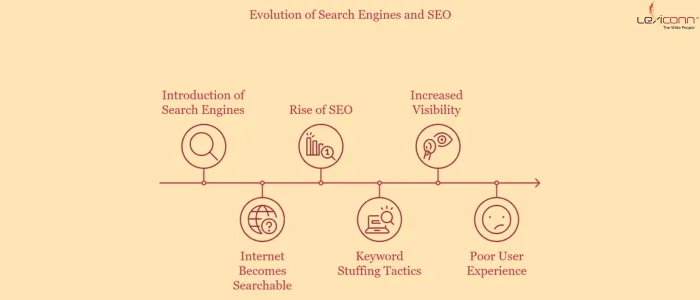
As search algorithms became more sophisticated, they started to prioritize user experience and content relevance over keyword density. Google's 2011 Panda update was a significant turning point, penalizing websites with low-quality content and rewarding those that provided genuine value. This shift forced businesses and writers to prioritize content that balanced search engine optimization with being informative, engaging, and accessible to users.
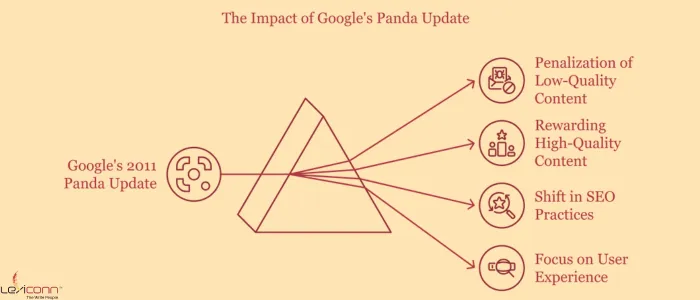
By the mid-2010s, content marketing emerged as a critical strategy for businesses. 91% of B2B marketers got into content marketing by 2016. The emphasis shifted to understanding the customer's journey and creating content tailored to each stage—awareness, consideration, and decision. Storytelling became a powerful tool to connect with audiences on an emotional level, fostering trust and loyalty.
The proliferation of social media platforms and the widespread use of smartphones revolutionized how content was consumed and shared. Users began to expect instant access to information and the ability to interact with content creators and brands directly. This led to the rise of micro-content—short, impactful pieces designed for quick consumption and sharing.
Web writing has undergone a transformation due to progress in AI and data analytics. Personalized engagement is now vital, with 80% of consumers favoring brands that provide customized experiences (Epsilon, 2018). Writers leverage AI tools to optimize and distribute content, ensuring messages are tailored to specific audience needs.
Today, successful web writing is a blend of art and science. It requires a deep understanding of SEO best practices, user intent, and the psychological triggers that motivate action. Content must be authentic, providing real value to the reader while aligning with business objectives. With information overload being a significant challenge—users spend an average of only 37 seconds reading an article—capturing and retaining attention is more critical than ever.
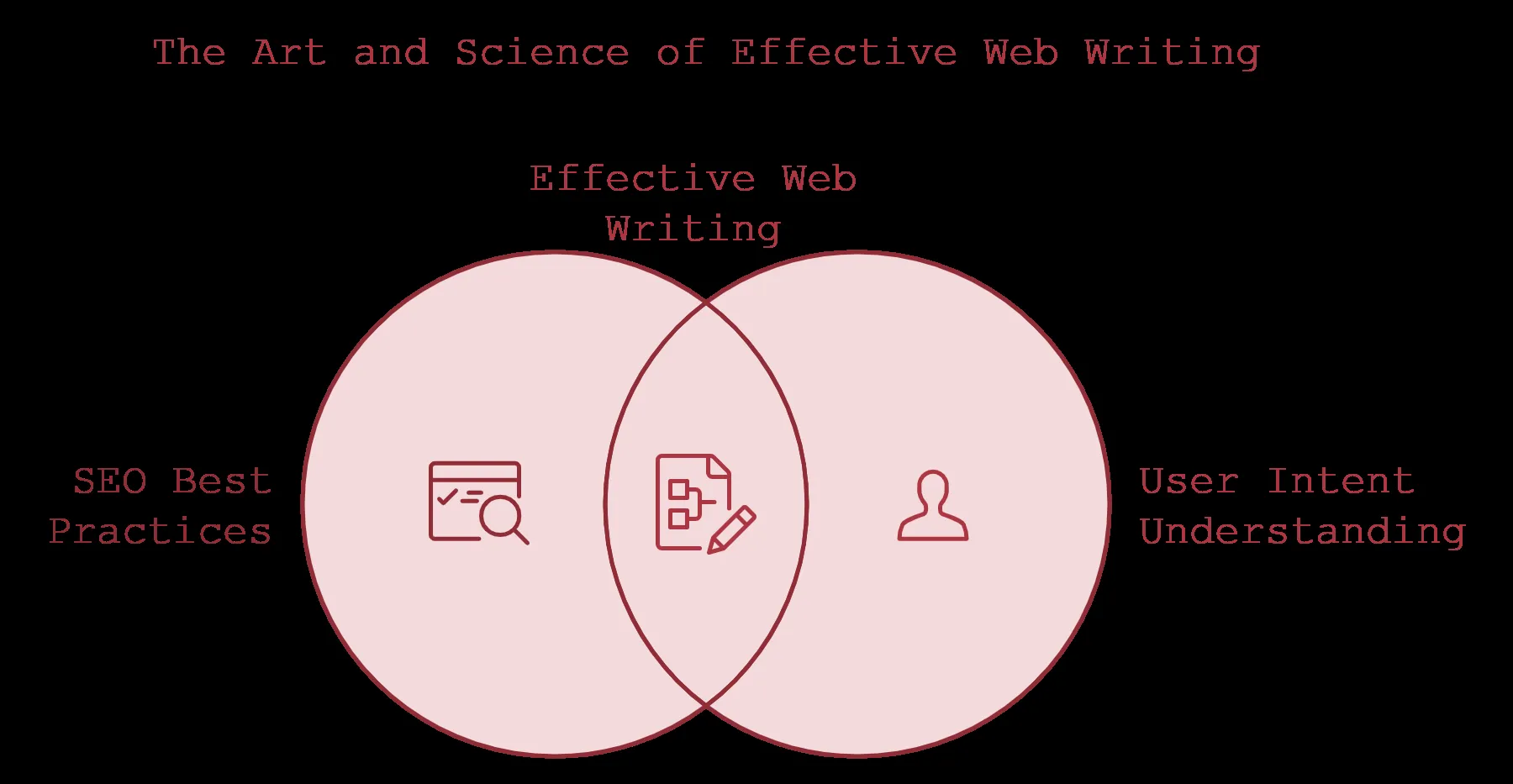
In this evolved context, understanding your audience is not just beneficial—it's essential. It's the foundation upon which all successful web writing is built. By knowing who your readers are, what they care about, and how they interact with content, you can create messaging that aligns with their expectations.
Recognizing the importance of these trends and insights sets the stage for implementing best practices in web writing. It's about moving beyond generic content to create meaningful interactions that drive action. In the following sections, we'll delve into specific strategies that leverage this understanding to enhance your web writing, engage your audience, and achieve your business goals.
Web writing without an audience-first approach is like speaking in an empty room. To truly engage, you need to tailor your message for those who will read it. Understanding your target audience requires thoughtful research and specific methodologies.

Key Tips:
Pro Tip: In the realm of content marketing, try to build the trust of your target audience. Address your audience's specific needs to make your content stand out.
Having a solid content strategy is foundational to successful web writing. It starts with a well-defined purpose, outlining key messages and setting measurable goals for each piece of content. This strategic approach not only enhances engagement but also extends your reach to the right audience.
At LexiConn, a content marketing agency based in Mumbai, we’ve witnessed how strategic content planning makes all the difference. By integrating clear objectives with creative execution, we help businesses craft compelling narratives that resonate with their target audience. Our expertise ensures that your content doesn't just exist—it performs, engages, and drives results.

Best Practices in Content Strategy:
By building a thoughtful content plan, you're not only maximizing SEO but also fostering genuine audience engagement.
SEO is essential, but never at the expense of readability. The challenge? Balance keyword use with engaging, natural-sounding language. Our content team at LexiConn prioritizes user-friendly SEO practices to help clients rank while still offering value.

Tips to Integrate SEO Smoothly:
To go further, using SEO tools is an excellent way to track metrics that support content health, content gaps, user engagement, and performance.
In web writing, headlines are your first chance to make an impression, and today, you can leverage AI tools to make that impression even more powerful. AI-powered Headline Analyzers, Headline Generators, Headline Research Tools, and Headline A/B Testing Tools can optimize headlines by analyzing metrics like:
Using these tools helps create headlines that engage and resonate with your audience. Here's how to use headline best practices for maximum impact:
Best Practices for Headline Writing:

Remember, a headline should give readers a clear idea of what they'll gain without any fluff. An example? "Five Proven Content Strategies to Boost Audience Engagement."
Web readers typically skim content, so brevity is key. Shorter sentences and paragraphs improve readability, making it easier for readers to absorb information quickly. We recommend keeping paragraphs under 50 words and sentences short.
Quick Tips:
A reader should find value without feeling like they're reading a wall of text. Our motto? Keep it snappy; keep it real.
Content is more than words; it's an experience. Visuals like images, infographics, and smart art break up the text, keeping readers engaged. For instance, at LexiConn, we design visuals with our brand color (#ad3642) for cohesion and brand recall.
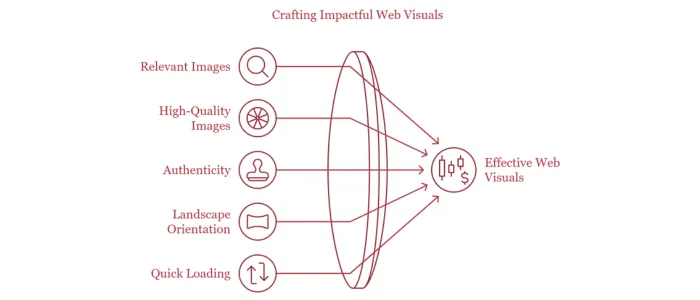
Top Tips for Visuals in Web Writing:
Not only do visuals make content visually appealing, but they also aid in illustrating complex ideas.
Storytelling isn't reserved for novels; it's a powerful tool in web writing too. By weaving stories that resonate, you create a memorable experience that sticks with readers.

How to Use Storytelling in Web Content:
Example: A recent LexiConn client increased web engagement by 30% after implementing a storytelling approach in their blog posts.
Adding links to other helpful pages enhances the user experience. Use inbound links to guide readers to related articles on your website and outbound links for credible sources, building trust and authority in your content.
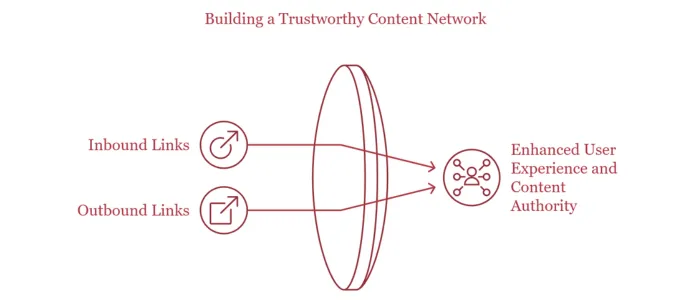
Linking Tips:
For example, a link to "Creating Content that Converts" on your site adds value to readers seeking more in-depth information.
Giving readers something extra—like an eBook or a checklist—can increase engagement and conversion rates. Here's where a well-crafted downloadable, such as "Top 10 Web Writing Techniques," becomes invaluable.
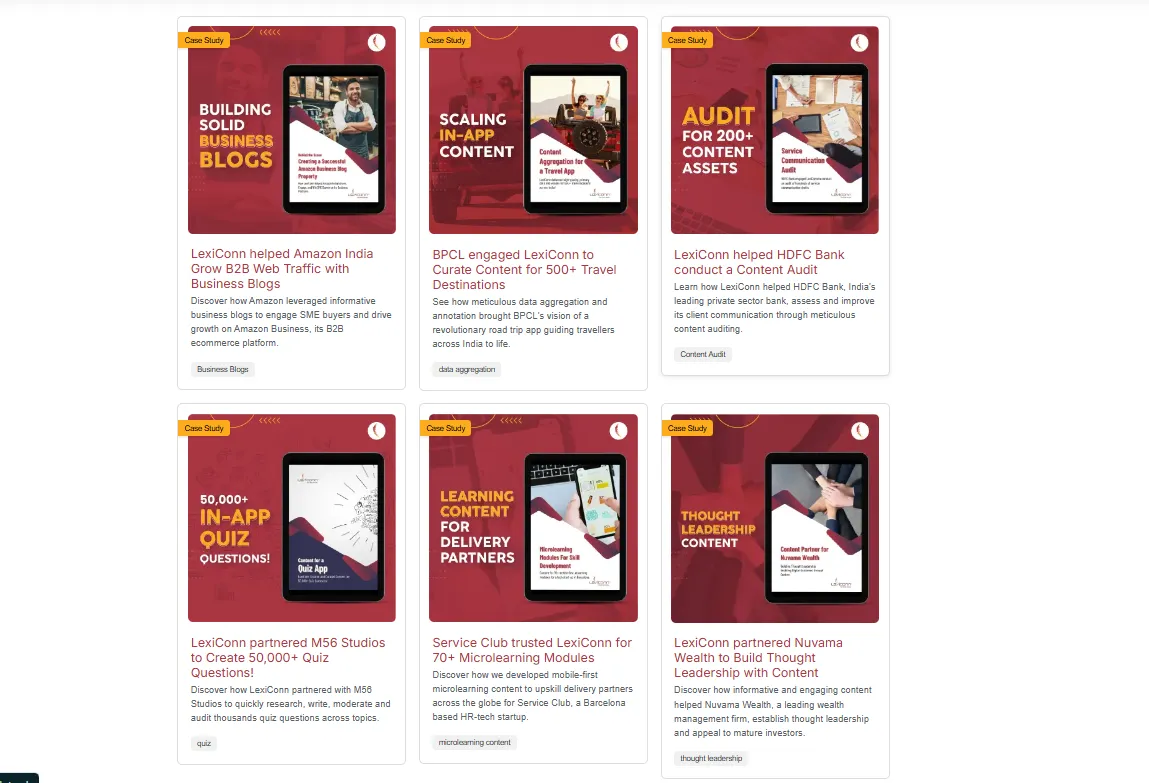
[LexiConn Case Studies: Downloadables]
Ideas for Downloadable Assets:
By offering these resources, you establish your brand as a trusted source of valuable knowledge.
Every piece of content should have a purpose, and a strong CTA reinforces that purpose. Whether inviting readers to "Enhance Your Web Content with LexiConn" or to "Book a Free Consultation," a direct CTA encourages action.
Best Practices for CTAs:
Crafting high-quality, engaging web content is an art, but with these best practices, it becomes achievable. At LexiConn, we believe in combining content strategy, audience understanding, and SEO expertise to create web writing that resonates. Let us help you elevate your content with writing that truly speaks to your audience.
Want to learn more about improving your web writing? Visit LexiConn's blog or explore our services to start creating engaging content that drives results.
Ready to take your content strategy to the next level?
|
At Lexiconn, we specialize in crafting high-quality, search-optimized content that drives results. Let our team of experts help you boost your rankings and grow your online presence. Contact us today for a free 30-minute consultation to start optimizing! or Visit us at www.lexiconn.in or drop us a line at [email protected]. |



I have read and accept the Privacy Policy
Read More